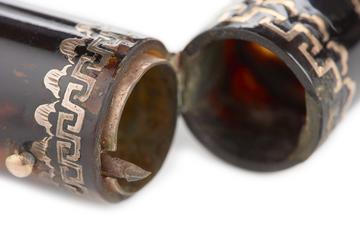
Scalp cooling 'cold cap'
- Made:
- 2020 in United Kingdom










Paxman scalp cooling 'cold cap' for preventing chemotherapy-induced hair loss, made by Paxman Coolers Ltd, 2020.
This is a scalp cooling cap, often called a 'cold cap'. It would be worn by individuals receiving chemotherapy treatment for cancer, to reduce the impact of hair loss caused by the treatment. Chemotherapy works by killing cancer cells that divide rapidly. Sometimes it can affect healthy cells that grow rapidly such as hair follicles, causing hair loss as a side-effect. Scalp cooling reduces the amount of chemotherapy drugs taken up by healthy hair follicles, in part by constricting blood vessels serving the scalp and reducing the metabolic activity of the hair follicles. This helps to reduce the impact of hair loss.
The cap would be connected to a refrigeration unit, containing a coolant that is circulated through the cap. Coolant passes through blue, soft silicone tubing contained inside the cap, that extracts heat from the patient’s scalp. The grey neoprene cover insulates the scalp, whilst absorbing condensation. Bungee-cord adjustments ensure a close fit to the patient’s scalp. Temperature sensors ensure the cap maintains an even and consistent temperature at the scalp.



